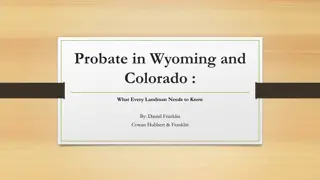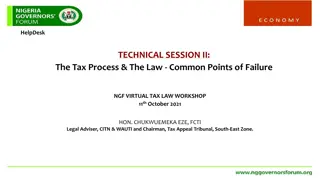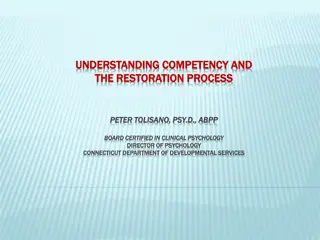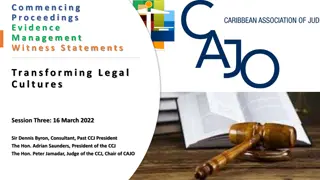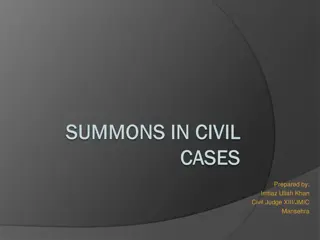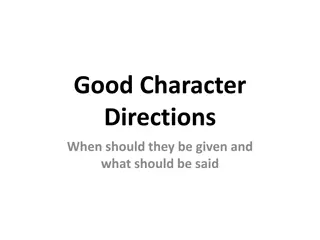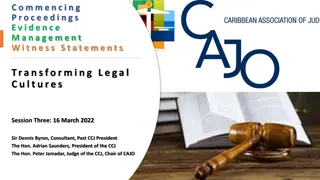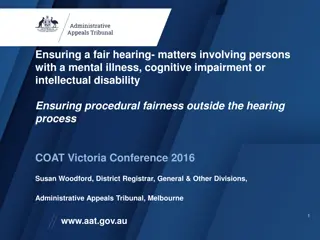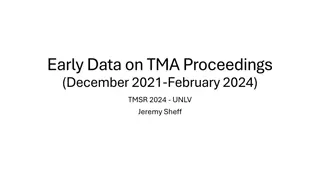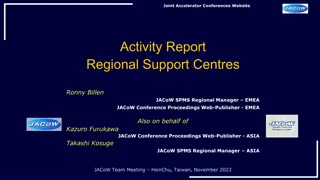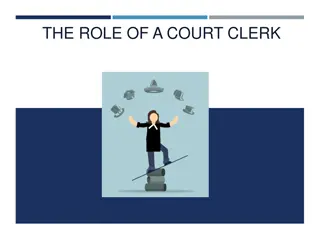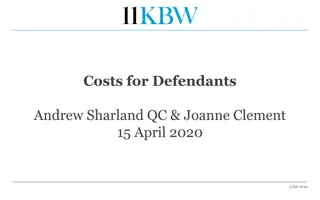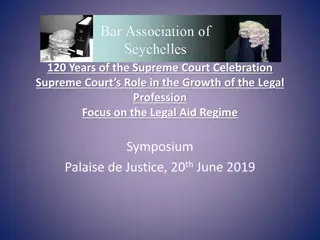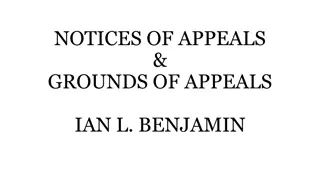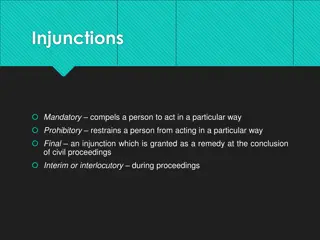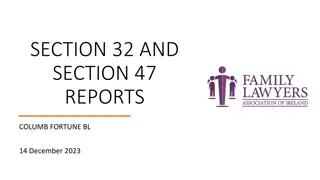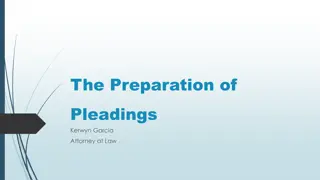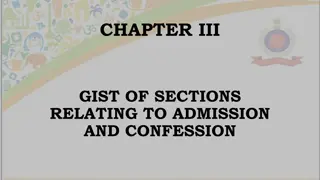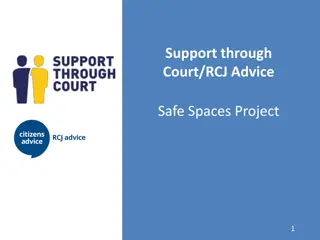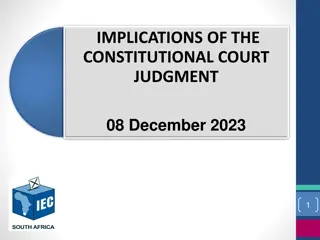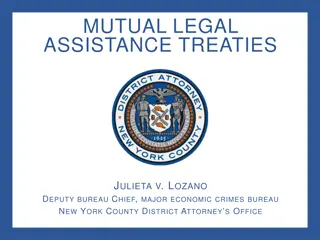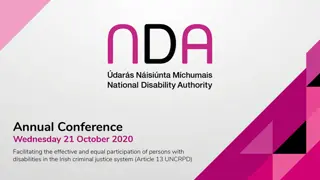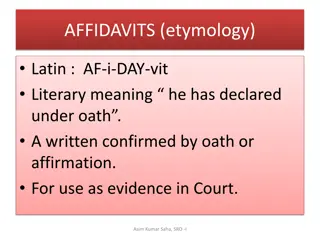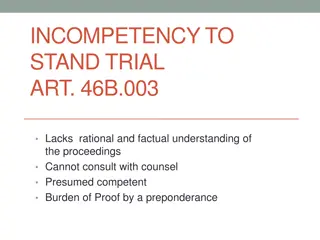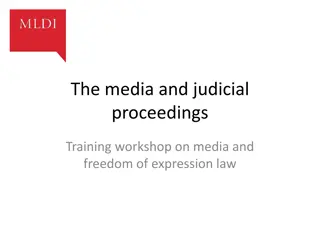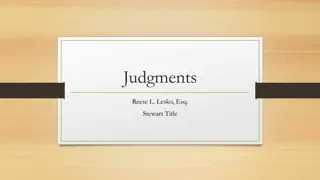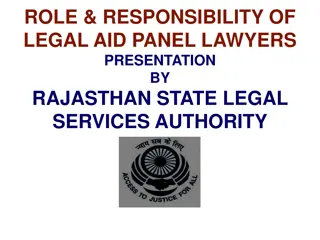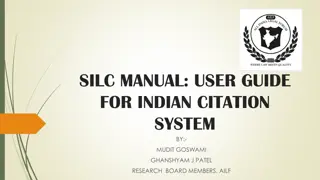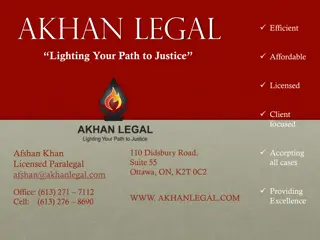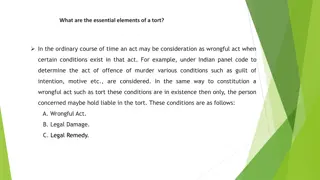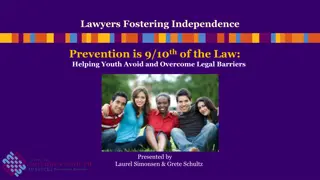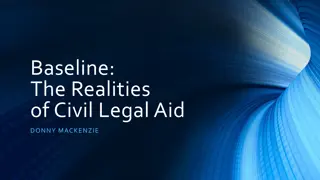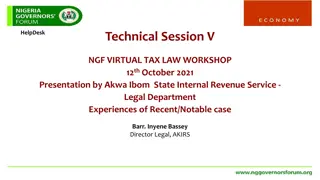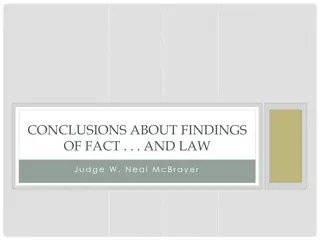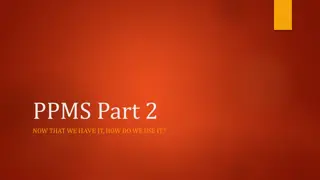Understanding Summary Judgment in Legal Proceedings
Summary judgment is a legal process where a court decides on a case without a full trial when one party has no realistic chance of success. It aims to save time and resources by swiftly resolving claims. The history, availability, requirements, and overriding objective of summary judgment are explored in detail, along with practical considerations and notable cases.
Download Presentation

Please find below an Image/Link to download the presentation.
The content on the website is provided AS IS for your information and personal use only. It may not be sold, licensed, or shared on other websites without obtaining consent from the author. Download presentation by click this link. If you encounter any issues during the download, it is possible that the publisher has removed the file from their server.
E N D
Presentation Transcript
Summary Judgment Justice Ronnie Boodoosingh 30 January 2020
What is Summary Judgment? Judgment Without a Trial Part 15 Summary Possession of Land: Part 68 Mortgage Claims: Part 69
History Moorings in Keating s Act Economic and Social Pressure from Mercantile Class Delays and Technicalities of the Law: Both common law and Chancery Courts. Originally concerned significantly with collection of debt UK Supreme Court of Judicature Act 1873: for debt and liquidated money claims Gradually extended to land, chattels, securities, contract.
When Available / Not Available Where party has no realistic chance of success on claim or part of claim or issue on claim or defence: 15.2 Summary judgment not available for constitutional claims; judicial review; false imprisonment; malicious prosecution; defamation 15.3 Evidence to verify facts needed 15.4
Requirements Realistic Prospect of Success of Defence / Claim; not fanciful Some degree of conviction, not merely arguable Court does not have to merely take at face value without analysis everything defendant says; Court can look at contemporaneous documents Not only what is before the court but what can reasonably be put forward at a trial Fuller investigation of facts sometimes necessary at a trial
Overriding Objective of CPR Saving expense Expedition Proper use of court resources Proportionate Interests of justice IF CLAIM OR DEFENCE BOUND TO FAIL, NO REASON TO LEAVE IT TO TRIAL
A Few Cases Sagicor v Taylor-Wright [2018] UKPC 12 Apua Funding v RBTT Trust, Civ. Appeal No. 94 of 2010, 6 November 2015 Western United Credit Union v Ammon Civil Appeal No. 103 of 2006, 6 Oct 2010 Fletcher v Sampson Phillip and Others, Civ. Appeal No. P005/2017, 24 Nov 2017
A Few Practical Points Available for part of claim Carefully weigh if necessary or justified Where serious conflict on evidence, no If defending an application have to put your best foot forward. No hiding your trump. If you don t succeed it would have delayed case Costs Another option is trial on preliminary issue or expedited trial.


